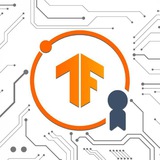5 Free NLP Courses I’d Recommend for 2025
1. NLP in Python: 🔗 Course
Learn fundamental NLP techniques using Python with hands-on projects.
2. AI Chatbots (No Code): 🔗 Course
Build AI-powered chatbots without programming in this IBM course.
3. Data Science Basics: 🔗 Course
Beginner-friendly tutorials on data analysis, mining, and modeling.
4. NLP on Google Cloud: 🔗 Course
Advanced NLP with TensorFlow and Google Cloud tools for professionals.
5. NLP Specialization: 🔗 Course
All the best 👍👍
1. NLP in Python: 🔗 Course
Learn fundamental NLP techniques using Python with hands-on projects.
2. AI Chatbots (No Code): 🔗 Course
Build AI-powered chatbots without programming in this IBM course.
3. Data Science Basics: 🔗 Course
Beginner-friendly tutorials on data analysis, mining, and modeling.
4. NLP on Google Cloud: 🔗 Course
Advanced NLP with TensorFlow and Google Cloud tools for professionals.
5. NLP Specialization: 🔗 Course
All the best 👍👍
👍8❤1
Tools Every AI Engineer Should Know
1. Data Science Tools
Python: Preferred language with libraries like NumPy, Pandas, Scikit-learn.
R: Ideal for statistical analysis and data visualization.
Jupyter Notebook: Interactive coding environment for Python and R.
MATLAB: Used for mathematical modeling and algorithm development.
RapidMiner: Drag-and-drop platform for machine learning workflows.
KNIME: Open-source analytics platform for data integration and analysis.
2. Machine Learning Tools
Scikit-learn: Comprehensive library for traditional ML algorithms.
XGBoost & LightGBM: Specialized tools for gradient boosting.
TensorFlow: Open-source framework for ML and DL.
PyTorch: Popular DL framework with a dynamic computation graph.
H2O.ai: Scalable platform for ML and AutoML.
Auto-sklearn: AutoML for automating the ML pipeline.
3. Deep Learning Tools
Keras: User-friendly high-level API for building neural networks.
PyTorch: Excellent for research and production in DL.
TensorFlow: Versatile for both research and deployment.
ONNX: Open format for model interoperability.
OpenCV: For image processing and computer vision.
Hugging Face: Focused on natural language processing.
4. Data Engineering Tools
Apache Hadoop: Framework for distributed storage and processing.
Apache Spark: Fast cluster-computing framework.
Kafka: Distributed streaming platform.
Airflow: Workflow automation tool.
Fivetran: ETL tool for data integration.
dbt: Data transformation tool using SQL.
5. Data Visualization Tools
Tableau: Drag-and-drop BI tool for interactive dashboards.
Power BI: Microsoft’s BI platform for data analysis and visualization.
Matplotlib & Seaborn: Python libraries for static and interactive plots.
Plotly: Interactive plotting library with Dash for web apps.
D3.js: JavaScript library for creating dynamic web visualizations.
6. Cloud Platforms
AWS: Services like SageMaker for ML model building.
Google Cloud Platform (GCP): Tools like BigQuery and AutoML.
Microsoft Azure: Azure ML Studio for ML workflows.
IBM Watson: AI platform for custom model development.
7. Version Control and Collaboration Tools
Git: Version control system.
GitHub/GitLab: Platforms for code sharing and collaboration.
Bitbucket: Version control for teams.
8. Other Essential Tools
Docker: For containerizing applications.
Kubernetes: Orchestration of containerized applications.
MLflow: Experiment tracking and deployment.
Weights & Biases (W&B): Experiment tracking and collaboration.
Pandas Profiling: Automated data profiling.
BigQuery/Athena: Serverless data warehousing tools.
Mastering these tools will ensure you are well-equipped to handle various challenges across the AI lifecycle.
#artificialintelligence
1. Data Science Tools
Python: Preferred language with libraries like NumPy, Pandas, Scikit-learn.
R: Ideal for statistical analysis and data visualization.
Jupyter Notebook: Interactive coding environment for Python and R.
MATLAB: Used for mathematical modeling and algorithm development.
RapidMiner: Drag-and-drop platform for machine learning workflows.
KNIME: Open-source analytics platform for data integration and analysis.
2. Machine Learning Tools
Scikit-learn: Comprehensive library for traditional ML algorithms.
XGBoost & LightGBM: Specialized tools for gradient boosting.
TensorFlow: Open-source framework for ML and DL.
PyTorch: Popular DL framework with a dynamic computation graph.
H2O.ai: Scalable platform for ML and AutoML.
Auto-sklearn: AutoML for automating the ML pipeline.
3. Deep Learning Tools
Keras: User-friendly high-level API for building neural networks.
PyTorch: Excellent for research and production in DL.
TensorFlow: Versatile for both research and deployment.
ONNX: Open format for model interoperability.
OpenCV: For image processing and computer vision.
Hugging Face: Focused on natural language processing.
4. Data Engineering Tools
Apache Hadoop: Framework for distributed storage and processing.
Apache Spark: Fast cluster-computing framework.
Kafka: Distributed streaming platform.
Airflow: Workflow automation tool.
Fivetran: ETL tool for data integration.
dbt: Data transformation tool using SQL.
5. Data Visualization Tools
Tableau: Drag-and-drop BI tool for interactive dashboards.
Power BI: Microsoft’s BI platform for data analysis and visualization.
Matplotlib & Seaborn: Python libraries for static and interactive plots.
Plotly: Interactive plotting library with Dash for web apps.
D3.js: JavaScript library for creating dynamic web visualizations.
6. Cloud Platforms
AWS: Services like SageMaker for ML model building.
Google Cloud Platform (GCP): Tools like BigQuery and AutoML.
Microsoft Azure: Azure ML Studio for ML workflows.
IBM Watson: AI platform for custom model development.
GitHub/GitLab: Platforms for code sharing and collaboration.
Bitbucket: Version control for teams.
8. Other Essential Tools
Docker: For containerizing applications.
Kubernetes: Orchestration of containerized applications.
MLflow: Experiment tracking and deployment.
Weights & Biases (W&B): Experiment tracking and collaboration.
Pandas Profiling: Automated data profiling.
BigQuery/Athena: Serverless data warehousing tools.
Mastering these tools will ensure you are well-equipped to handle various challenges across the AI lifecycle.
#artificialintelligence
👍8❤2
The next 10-20 years will be dominated by AI.
If I was joining the race, here's what I'd focus on
- Python
- Machine learning & deep learning
- Basic MLOps
- LLMs
- RAGs (Retrieval Augmented Generation)
- Agentic AI
If I was joining the race, here's what I'd focus on
- Python
- Machine learning & deep learning
- Basic MLOps
- LLMs
- RAGs (Retrieval Augmented Generation)
- Agentic AI
👍13
Tools for AI Enthusiasts
• Google Colab: For learning AI/ML coding.
• Kaggle: To practice data science projects.
• Hugging Face: For working with AI models.
• OpenAI API: To integrate AI into apps.
• TensorFlow: To build and deploy AI models.
• Google Colab: For learning AI/ML coding.
• Kaggle: To practice data science projects.
• Hugging Face: For working with AI models.
• OpenAI API: To integrate AI into apps.
• TensorFlow: To build and deploy AI models.
🔥12👍1
